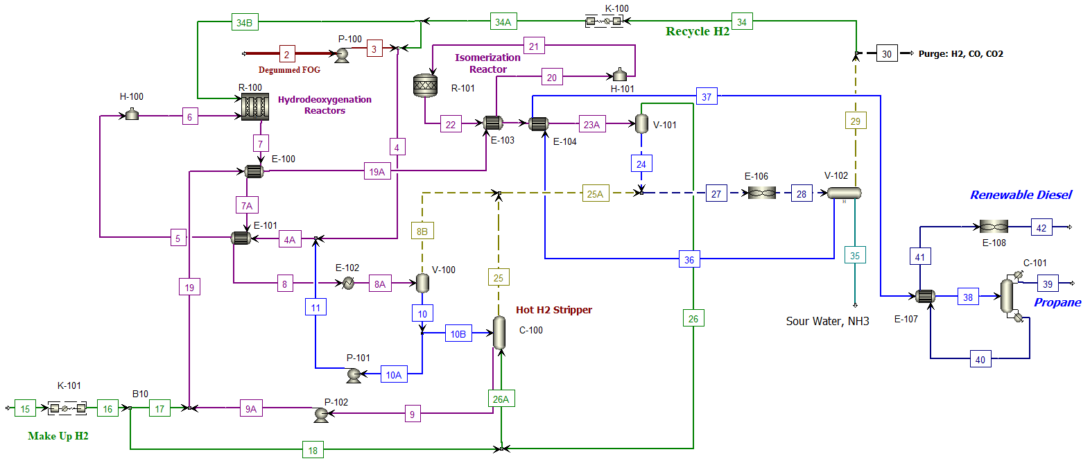Senior design group aims to create vegetable oil plant
block 1

As of now, the majority of renewable fuel production in the U.S. is produced throughout the U.S. Gulf Coast and western states such as California, which has the Low Carbon Fuel Standard.
This standard is designed to decrease the carbon intensity in transportation throughout California and provide an increasing range of low-carbon and renewable alternatives. One senior design group in the chemical engineering department is working to bring more renewable fuel plants to the Midwest.
These seniors, Avidar Al Kurdi, Tristan Suastegui, Siddhi Patel, Salma Khalifa, and Ramiro Roman worked with their mentor, Lance Baird, a former Honeywell UOP engineer for 37 years, using a process called ecofining developed by Honeywell UOP, to create a simulated plant for renewable diesel production.
To create the simulated plant, the group modeled their project using soybean oil, which creates the most heat when turned into renewable energy, to determine cost and energy requirements.
“We have been looking at putting a plant in Peoria, Illinois, which is a really good place in the Midwest because there’s access to all these sources of feedstock,” Al Kurdi said. “So, it’s not just cooking oil that can be used, it’s waste crops that will be turned into oil rather than being put into the landfill. The Midwest is a strong farming region that we have access to and it’s a central hub for other sources of feedstock too.”
Other renewable fuel sources include animal fat, various cooking oils, and greases. Unlike biodiesel, renewable diesel is most similar in composition to crude diesel. Biodiesel is less efficient due to its composition, and it requires a nonstandard engine whereas renewable diesel can take almost any feedstock or be combined with crude oil to create renewable fuel.
block 2

“We wanted this to be as close to a real-life simulation and scenario as possible,” Al Kurdi said. In doing so, the group continuously adjusted its model to create a profitable, environmentally friendly, and innovative process.
They also combed through lots of literature, patents, governmental, and economic policies throughout the process of creating the simulation. Specifically, the group used policies such as the Renewable Fuel Standard and programs funded by the Bipartisan Infrastructure Law to examine their potential profits and analyze the way that economics play a role in creating engineering plants.
The RSF is a federal program that requires transportation fuel sold in the U.S. to contain a minimum volume of renewable fuels. The programs funded by the Bipartisan Infrastructure Law aim to drive the commercialization of technologies helping remove CO2 directly from the atmosphere, deliver cleaner air, and create good-paying jobs.
The group hopes to improve energy optimization research through their use of models. A big problem they discovered with their process is that it generates lots of heat and is hard to manage because the heat levels cause a loss of profit. The process also consumes a lot of hydrogen as it’s used to cool down the reactors, which they hope to solve and reduce the cost of hydrogen and hydrogen waste.
Another potential change to the group’s process would be finding a different source of hydrogen that’s less costly. They sourced hydrogen from a pipeline, however, pockets of underground hydrogen pockets that can be extracted have been found in the Midwest as an alternative source of hydrogen sourcing.